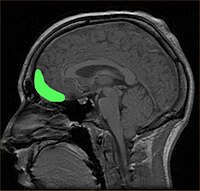
Photo from wikipedia
Objectives To compare the efficacies, frequencies and reasons for treatment interruption of fingolimod (FTY), dimethyl fumarate (DMF) or teriflunomide (TERI) in a nationwide observational cohort. Materials and methods Two cohorts… Click to show full abstract
Objectives To compare the efficacies, frequencies and reasons for treatment interruption of fingolimod (FTY), dimethyl fumarate (DMF) or teriflunomide (TERI) in a nationwide observational cohort. Materials and methods Two cohorts of patients with relapsing–remitting multiple sclerosis (RRMS) having started treatment with FTY, DMF or TERI documented in the Austrian MS Treatment Registry (AMSTR) since 2014 and either staying on therapy for at least 24 months (24 m cohort) or with at least one follow-up visit after start of treatment (total cohort). The 24 m cohort included 629 RRMS patients: 295 in the FTY, 227 in the DMF and 107 in the TERI group. We used multinomial propensity scores for inverse probability weighting in generalized linear and Cox proportional hazards models to correct for the bias of this non-randomised registry study. Results Estimated mean annualized relapse rates (ARR) over 24 months were 0.13 for FTY, 0.09 for DMF and 0.11 for TERI treatment. For TERI in comparison with DMF, we observed higher probability for treatment interruption ( p = 0.023) and reduced sustained EDSS regression for 12 ( p = 0.016) and 24 weeks ( p = 0.031) and, for the comparison of DMF versus FTY, a reduced sustained EDSS progression for 12 weeks ( p = 0.02). Conclusions Relapse rates with treatment with FTY, DMF and TERI were similar. Patients treated with DMF showed less sustained disability progression for 12 weeks than FTY-treated patients. However, FTY and DMF treatment was associated with more likely EDSS regression for 12 and 24 weeks and a lower probability for treatment interruption as compared to TERI-treated patients.
Journal Title: Journal of Neurology
Year Published: 2020
Link to full text (if available)
Share on Social Media: Sign Up to like & get
recommendations!